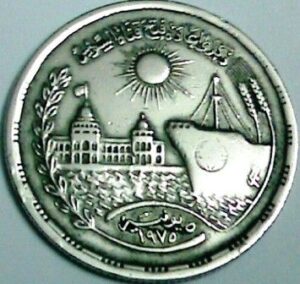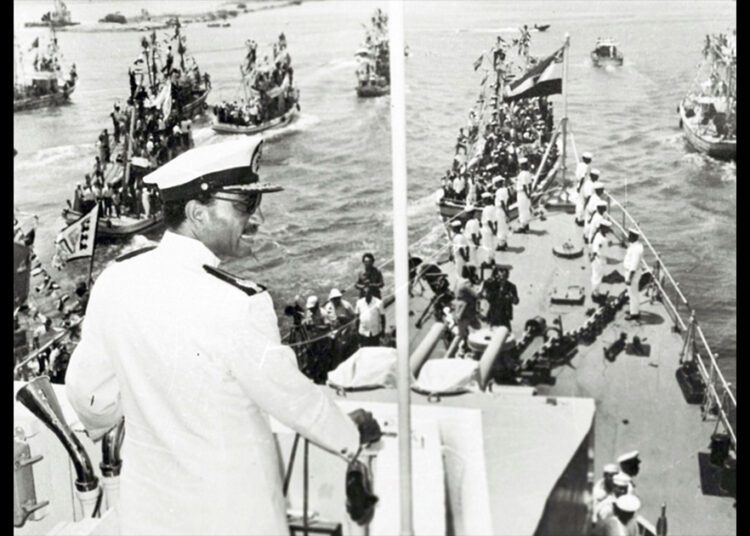When the Suez Canal was blocked in March this year after a gigantic container vessel ran aground, the world got a taste of the importance of the canal when its trade was paralysed for a whole week.

This is why the anniversary of the reopening of the Suez Canal on June 5, 1975, after eight years of closure, should not go unnoticed or unremembered.
On a day like Saturday 46 years ago, Egypt reopened the Suez Canal to international shipping, eight years after it was closed by the 1967 Israeli aggression on Egypt.
Announcing the reopening of the Suez Canal, Egypt’s late president Anwar el‐Sadat called the event “the happiest day in my life”.
He stood in an admiral’s white uniform on the bridge of the destroyer Sixth of October as it cut a thin chain across the canal’s entry and sailed south from Port Said harbor leading a ceremonial convoy.
The first commercial convoy passed through the canal two hours later. It was made up by one ship each from China, Greece, Kuwait, the former Soviet Union and Yugoslavia.
The departure of the destroyer was a scene of joy and cacophony — ship sirens, cheers by tens of thousands of spectators, church bells and droning of helicopters over the harbour, The New York Times reported.
A flock of a hundred or so doves was released from the newly painted headquarters of the Suez Canal Authority as President Sadat boarded the destroyer.
Since the Suez Canal was closed in 1967, most Arab Gulf petroleum had been carried in large tankers around the tip of South Africa, a route longer than the passage through the canal.
A military uniform-clad Sadat was mimicked – probably by coincidence or on purpose – by incumbent Egyptian leader Abdel Fattah El Sisi as he opened a parallel canal (Suez Canal 2) of the Suez Canal on August 6, 2015.
The digging of a parallel Suez Canal 2 allowed a two-way traffic in the vital international maritime waterway for the first time since the opening of the Suez Canal itself in November 1869.
The presence of this canal cut transit time significantly short, saved huge amounts of money for shipping companies and contributed to speeding up the delivery of world cargo, including shipments of oil, to their destinations around the globe.
President Sisi called the new channel “Egypt’s gift to the world”.
The new route was also Egyptians’ gift to world trade, especially when one recalls the tens of thousands of people who queued inside the nation’s banks in 2014 to deposit their life’s savings so that they could be used in executing the project.
Egyptians collected roughly $6 billion in a matter of days, a move that showed that Egyptians can deliver whenever they want.
As it remembers Sadat’s reopening of the Suez Canal in 1975, Egypt also moves ahead with continually upgrading the canal with a major plan for the new channel coming close to execution in the coming period.






Discussion about this post